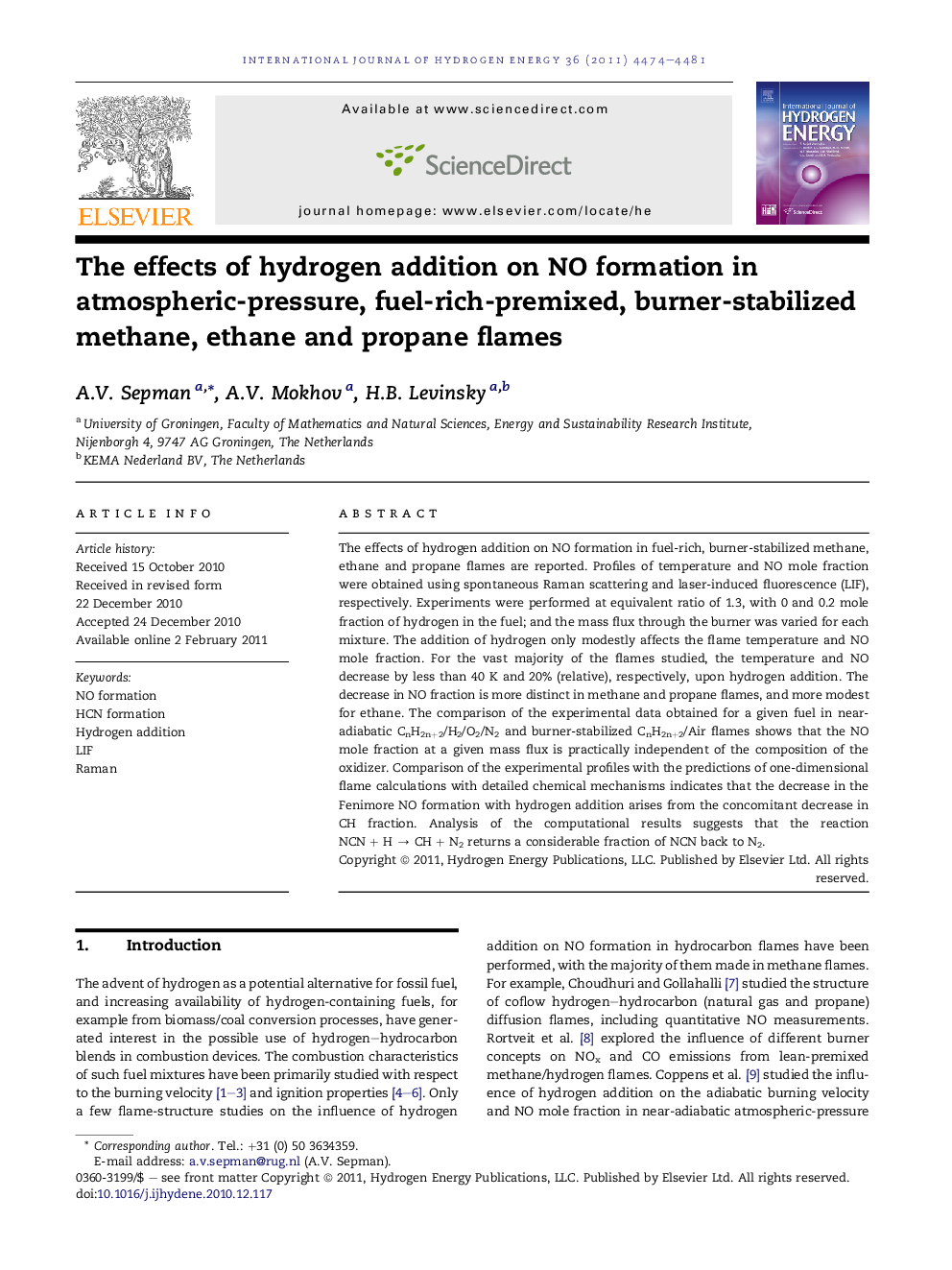| Article ID | Journal | Published Year | Pages | File Type |
|---|---|---|---|---|
| 1276236 | International Journal of Hydrogen Energy | 2011 | 8 Pages |
The effects of hydrogen addition on NO formation in fuel-rich, burner-stabilized methane, ethane and propane flames are reported. Profiles of temperature and NO mole fraction were obtained using spontaneous Raman scattering and laser-induced fluorescence (LIF), respectively. Experiments were performed at equivalent ratio of 1.3, with 0 and 0.2 mole fraction of hydrogen in the fuel; and the mass flux through the burner was varied for each mixture. The addition of hydrogen only modestly affects the flame temperature and NO mole fraction. For the vast majority of the flames studied, the temperature and NO decrease by less than 40 K and 20% (relative), respectively, upon hydrogen addition. The decrease in NO fraction is more distinct in methane and propane flames, and more modest for ethane. The comparison of the experimental data obtained for a given fuel in near-adiabatic CnH2n+2/H2/O2/N2 and burner-stabilized CnH2n+2/Air flames shows that the NO mole fraction at a given mass flux is practically independent of the composition of the oxidizer. Comparison of the experimental profiles with the predictions of one-dimensional flame calculations with detailed chemical mechanisms indicates that the decrease in the Fenimore NO formation with hydrogen addition arises from the concomitant decrease in CH fraction. Analysis of the computational results suggests that the reaction NCN + H → CH + N2 returns a considerable fraction of NCN back to N2.
► The addition of hydrogen only modestly affects the flame temperature and NO mole fraction. ► The decrease in NO fraction is more distinct in methane and propane flames, and more modest for ethane. ► The NO mole fraction at a given mass flux is practically independent of the composition of the oxidizer. ► Analysis of the computational results suggests that the reaction NCN + H → CH + N2 returns a considerable fraction of NCN back to N2.
